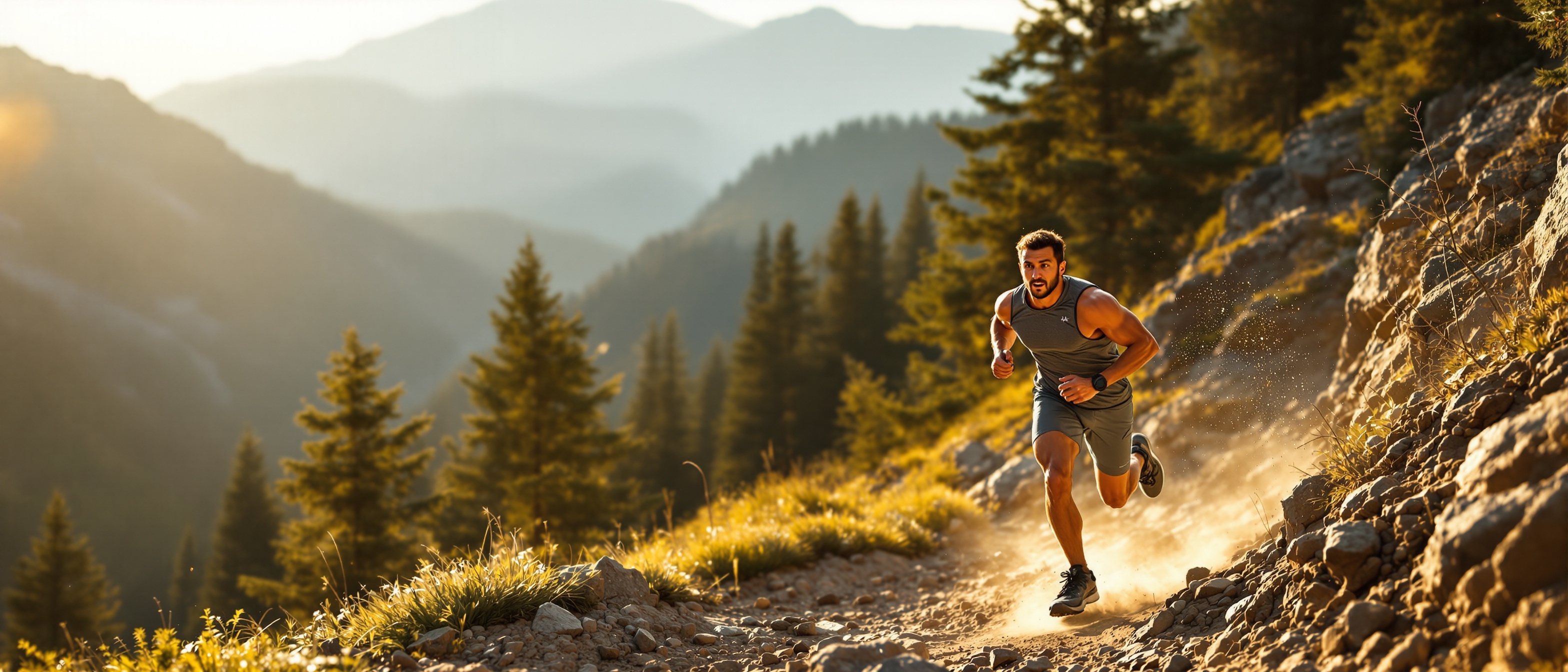Why Your Gym is Dying (But Adventure Fitness is Exploding)
Your gym membership is gathering dust. Your Peloton? It's been three weeks since you last clipped in. But here's what's wild—while traditional fitness is flattering, outdoor adventure training is exploding like never before.
I'm talking about a 340% surge in trail running searches since August. Rock climbing gym waitlists stretching months. Obstacle race registrations selling out in hours, not days.
Something's shifted. And if you're still thinking outdoor fitness is just "jogging in the park," you're missing the biggest movement in fitness right now.
Why Adventure Fitness Is Booming Now
Ever notice how your best workouts happen when you forget you're working out? That's exactly what's driving this outdoor fitness explosion.
After years of structured, predictable gym routines, people are craving something… messier. More real. The kind of training that doesn't feel like training at all.
But here's the kicker—it started with a problem. Traditional fitness wasn't delivering on its promises. Sure, you might get stronger or run faster, but the mental game? The adventure? The stories worth telling? That was missing.
Enter adventure fitness. It's not just about getting fit—it's about getting fit for life. For the unexpected. For the stories you'll tell years from now.
The timing couldn't be better. As summer winds down, that "back to school" energy kicks in for adults too. We're looking for fresh challenges. New communities. And honestly? A damn good reason to get off our phones for a few hours.
But here's what most people don't realize about this trend…
Popular Outdoor Training Styles
Forget what you think you know about outdoor workouts. This isn't your dad's weekend hiking.
Trail running is leading the charge—but not the gentle jog-through-the-woods version you're picturing. We're talking technical trail running. Rock hopping. Root dodging. The kind where your Garmin GPS becomes less important than your ability to read terrain in real-time.
Obstacle course training has evolved too. It's moved beyond the occasional Spartan Race into year-round training communities. Think functional fitness, but with mud, ropes, and the very real possibility of face-planting in front of strangers.
Rock climbing—both outdoor and gym-to-crag progression—has become the thinking person's strength training. It's chess meets deadlifts. Your grip strength matters, but so does problem-solving under pressure.
Then there's rucking. Military-inspired weighted walking that's somehow both meditative and brutal. People are discovering that carrying 20-40 pounds while walking isn't just great cardio—it's mental resilience training disguised as a stroll.
MovNat and parkour have gone mainstream too. Natural movement patterns that make your body work the way it was designed to. Jumping, crawling, climbing—basically everything playground rules taught us before we forgot how to play.
And here's the twist that changes everything: these aren't separate activities anymore. The most engaged outdoor fitness enthusiasts are combining them. Trail running with rock scrambling. Rucking with bodyweight exercises. It's becoming adventure fitness fusion.
But wait until you hear what the research says about why this works so well…
Benefits: Physical and Psychological
Here's what Harvard researchers discovered that might make you rethink your entire approach to fitness: outdoor exercise doesn't just work your body differently—it rewires your brain.
Physically, adventure fitness hits muscles your gym routine probably ignores. Trail running develops proprioception (your body's GPS system) in ways treadmills simply can't. Rock climbing builds functional grip strength that transfers to everything from opening pickle jars to… well, hanging off actual cliffs.
The uneven terrain, unpredictable weather, and constantly changing challenges create what exercise scientists call "movement variability." Your body adapts not just to specific exercises, but to adaptation itself.
But here's where it gets interesting psychologically.
A 2024 study in Environmental Science & Technology found that people who exercised outdoors showed 50% greater improvements in mood and self-esteem compared to indoor exercisers. But that's not the surprising part.
The surprising part? The effect lasted days, not hours.
Outdoor fitness triggers what psychologists call "soft fascination"—your brain enters a restorative state that actually repairs mental fatigue. It's like meditation, but with more adrenaline.
There's also the confidence factor. When you successfully navigate a technical trail or complete your first outdoor climb, your brain doesn't just register "completed workout." It registers "survived challenge." That's primal confidence building you can't get from hitting a PR on the leg press.
The community aspect is different too. Outdoor fitness communities are built around shared problem-solving and mutual encouragement, not competition. You're more likely to make genuine friendships scaling a rock face than sharing a squat rack.
And here's the piece most people miss entirely…
Getting Started: Gear, Risks, Progression
Think you need $2,000 in gear to start adventure fitness? Here's the truth: you probably need less equipment than you think, but more preparation than you realize.
For trail running, start with what you have. Regular running shoes work fine for groomed trails. The game-changer isn't your gear—it's your mindset. Begin with shorter distances on familiar terrain. Your goal isn't to conquer mountains; it's to rediscover what your body can do when it's not on a machine.
Rock climbing? Most climbing gyms rent everything you need for under $15. Spend three months building base strength and learning movement patterns indoors before you even think about real rock. The outdoor climbing community is incredibly welcoming, but they respect preparation.
For obstacle training, your local park is perfect. Playground equipment becomes your gym. Monkey bars, pull-up bars, hills for sprints. The obstacles aren't the hard part—the conditioning is.
Here's what matters more than gear: risk management. Adventure fitness has real consequences. Twisted ankles. Weather changes. Getting lost isn't just inconvenient—it can be dangerous.
Start local. Find your nearest trail system, climbing gym, or outdoor fitness group. The goal is building competence gradually, not Instagram content immediately.
Most importantly? Find your tribe. Adventure fitness works best as a community experience. Solo adventures have their place, but learning happens faster and safer with experienced guides.
The mistakes to avoid? Going too hard, too fast, too alone. Your ego wants to skip the basics. Your body needs you to respect the progression.
Your Move
TL;DR: • Adventure fitness is exploding because it delivers what traditional gyms can't: real-world strength and mental resilience • Popular styles blend trail running, obstacle training, climbing, and natural movement • Research shows outdoor exercise provides lasting mood benefits and builds functional fitness • Start local, progress gradually, prioritize safety over social media
Summer's ending, but adventure season? It's just getting started. Your gym will still be there when the weather turns. But right now, while your motivation is high and the trails are calling, maybe it's time to remember what your body was actually designed to do.
The question isn't whether outdoor fitness works. The question is: are you ready to find out what you're really capable of when you take your workouts off the beaten path?
Your next adventure is one decision away.





